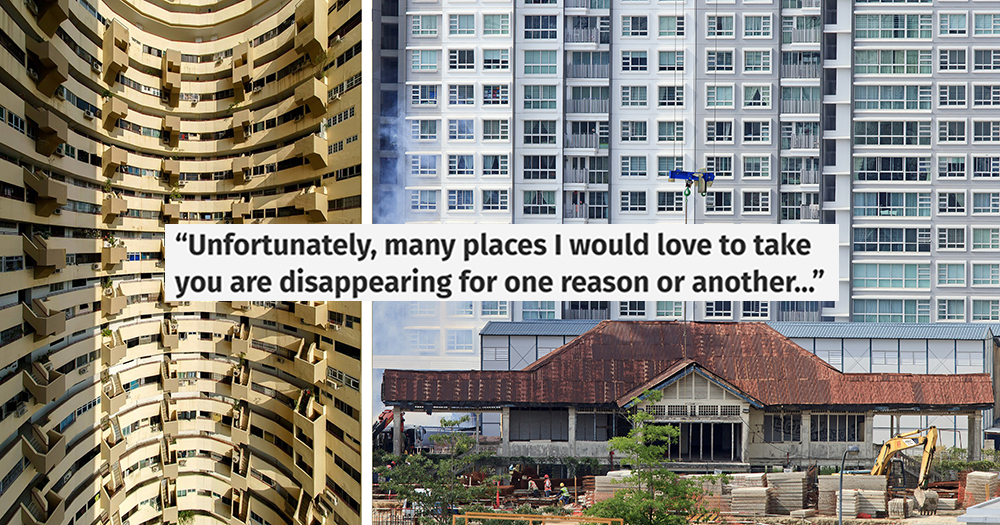Follow us on Telegram for the latest updates: https://t.me/mothershipsg
PERSPECTIVE: A sociologist by training, Darren Soh has been an architectural photographer for the last 15 years.
Photographing mainly in Singapore, Darren is convinced that by the time most Singaporeans have grown up, many of the places they were familiar with as children would have been obliterated in the name of redevelopment.
Many of these buildings and spaces hark from Singapore’s early post-independence years. They fall into the gap of not being ‘old enough’ to be conserved and not ‘new enough’ to be properly refurbished for contemporary use.
Here, we reproduce an excerpt by Soh from the book Letter to My Son, in which he writes a letter to his child about the significance of architectural landmarks in Singapore that have disappeared in the name of development.
Edited by Felix Cheong, Letter to My Son is published by Marshall Cavendish and you can get a copy of it here.
By Darren Soh
Dear Christian,
By the time you are able to fully understand this letter, most of the places and spaces I am about to show you would have disappeared for good.
Since Daddy is a photographer, I thought it would be more meaningful to share my memories with you through photographs rather than just describe to you what things were like “back then”.
You may or may not be interested in old places, but Daddy thought I would photograph some of these old buildings and put them together for you because they were special to me.
Possibly the most important of these is Block 82 Commonwealth Close where Daddy lived until I was six. It was there that I made my first memories and friends.
I remembered playing masak masak along the long common corridors with my neighbours, and going to kindergarten nearby at the Lutheran Church for a while before switching schools.
There used to be an open-air car park just downstairs where YeYe and NaiNai would buy roasted chestnuts on weekends from the hawker who came to the car park on a motorbike.
That car park, like many other open-air surface car parks in Singapore, does not exist anymore.
The Prime Minister once said that the spaces where these car parks occupy could be put to better use. I guess many places and spaces could be put to better use.
What is exactly is the meaning of putting a space to "better use"?
But Christian, what he did not say was for whom would these spaces be put to better use. I want you to remember that like many other things in life, “better use” is subjective and the answer is almost always different, depending on who you ask.
Who knows? By the time you are all grown up, there could no longer be any open-air surface car parks left in Singapore.
It does, however, appear that Block 82 Commonwealth Close is sticking around for a while longer. There are not any signs that it might be demolished, despite its age.
Maybe this has got to do with the fact that, together with Blocks 81 and 83 on the same hill in Queenstown, Block 82 is really quite special.
You see, they contain the very first HDB flats ever to be sold to people here in Singapore, way back in 1964 when they were first built. Before that, you could not buy a HDB flat even if you had the money to.
The truth was that at that time, most people could only afford to rent a flat.
However, this changed in 1964 when the government launched a programme called the “Home Ownership for the People Scheme” where they sold two-room and three-room flats for the first time.
YeYe’s daddy, who was my YeYe, bought one of these three-room flats in Block 82 for $6,200, which was a lot of money back then for those who were not so well-off.
Today, the same flats sell for 40 times more. What a world we live in!
Daddy will continue to photograph Block 82 Commonwealth Close as long as it is still standing, and I strongly encourage you to also start making photos of the block of flats we now live in.
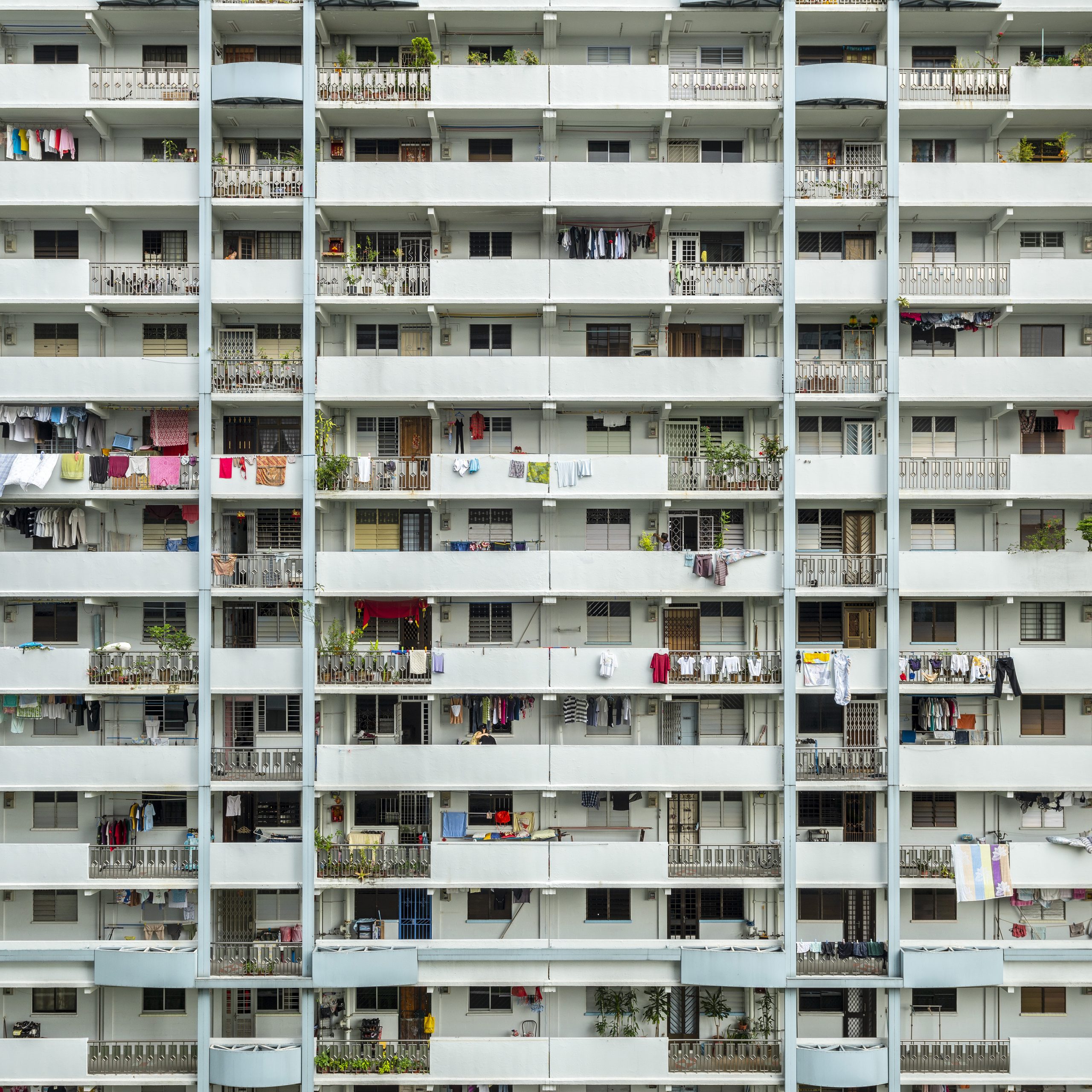 Facade of Block 82 Commonwealth Close. ©Darren Soh
Facade of Block 82 Commonwealth Close. ©Darren Soh
Condominiums sit on land that was once used for schools
When Mummy was a child, she used to attend Methodist Girls School and like many other schools in the early 1980s, it was located in the city where there are almost no primary schools today because the land has since been put to “better use”.
The school was built on top of a hill named Mount Sophia and Mummy, like many of her friends, sometimes climbed a flight of a hundred steps in order to get to school from Orchard Road, which is at the foot of the hill.
Long after Mummy left the school, it was converted into an arts and creativity hub literally named Old School in the 2000s. Together with Mummy, Daddy visited Old School often before you were born as there were always arts exhibitions or film screenings going on.
Unfortunately, the land on which Old School stood was deemed too valuable to carry on as an arts hub and in 2012, it was closed for good.
Shortly after, the land was sold to a private developer for a lot of money. All but one of the school buildings were demolished and today, the place where Mummy once went to school is a condominium.
The hundred steps up to the top of Mount Sophia remain though, one of the few relics from a time gone by left in that area. I wonder if building yet another condominium in the city at the expense of an arts hub is considered a “better use” for the land?
Thankfully, Daddy made quite a number of photographs of Old School while it was still used as an arts hub but beyond these methodical photographic recordings of the space and some fading memories, we have little else with which to remember Mummy’s old school.
Playgrounds have also been put to "better use"
Beyond just old blocks of flats and schools, playgrounds have also not been spared as Singapore continues to make “better use” of spaces.
You are very familiar with the Dragon Playground in Toa Payoh which we have visited many times. But did you know that Singapore was once covered with playgrounds depicting all sorts of animals?
There were doves, elephants and tortoises but one of Daddy’s favourite was the Pelican. The Pelican Playground, as its name suggests, was a giant pelican with a huge void where its beak should be.
We could climb into and even on top of this beak. Like the Dragon Playground, the Pelican was constructed in beautiful terrazo and covered in small mosaic tiles.
Unfortunately, there were a series of accidents involving children playing at these animal playgrounds in the 1990s and most of them were
quickly demolished and replaced by boring generic modular playgrounds made of plastic.
The very last Pelican Playground, the exact one in Daddy’s photographs, was located at Dover Road and it was demolished in 2012. I have been told that the HDB intends to conserve the Dragon Playground in Toa Payoh and it will not be destroyed like its more unfortunate siblings. At least we will always have that.
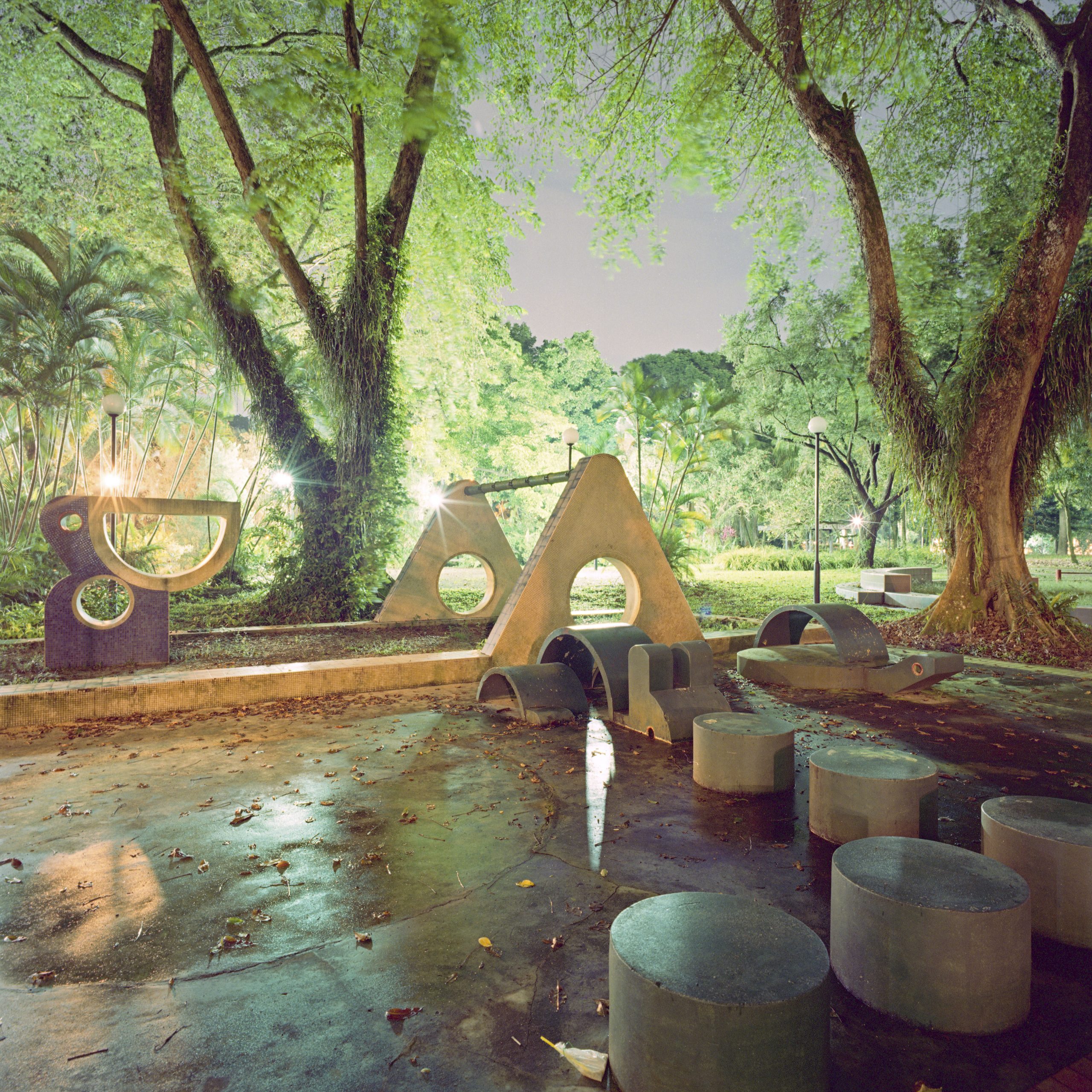 The last Pelican Playground in Singapore at Dover Road. ©Darren Soh
The last Pelican Playground in Singapore at Dover Road. ©Darren Soh
Taking photographs are key to preserving the memories of these places
An American uncle by the name of John Szarkowski who lived before your time once described and collectively titled the photographs of another photographer uncle named Garry Winogrand as “figments from the real world” because they were so candid that they made him
feel like he stood where the photographer was when he made those photographs.
This might explain why Daddy appears to be photographing everything around me all the time; to seize figments of our real world before it changes beyond recognition.
In fact, there are many other examples of spaces and buildings photographed by Daddy that I could show you, but sharing their photographs with you just is not the same as showing you the real thing.
One such building is Pearl Bank Apartments.
You may or may not remember it, but Daddy brought you to Pearl Bank Apartments just once when you were younger, because I already knew then that it could not be saved from destruction. It was a building that no number of photographs could do justice to.
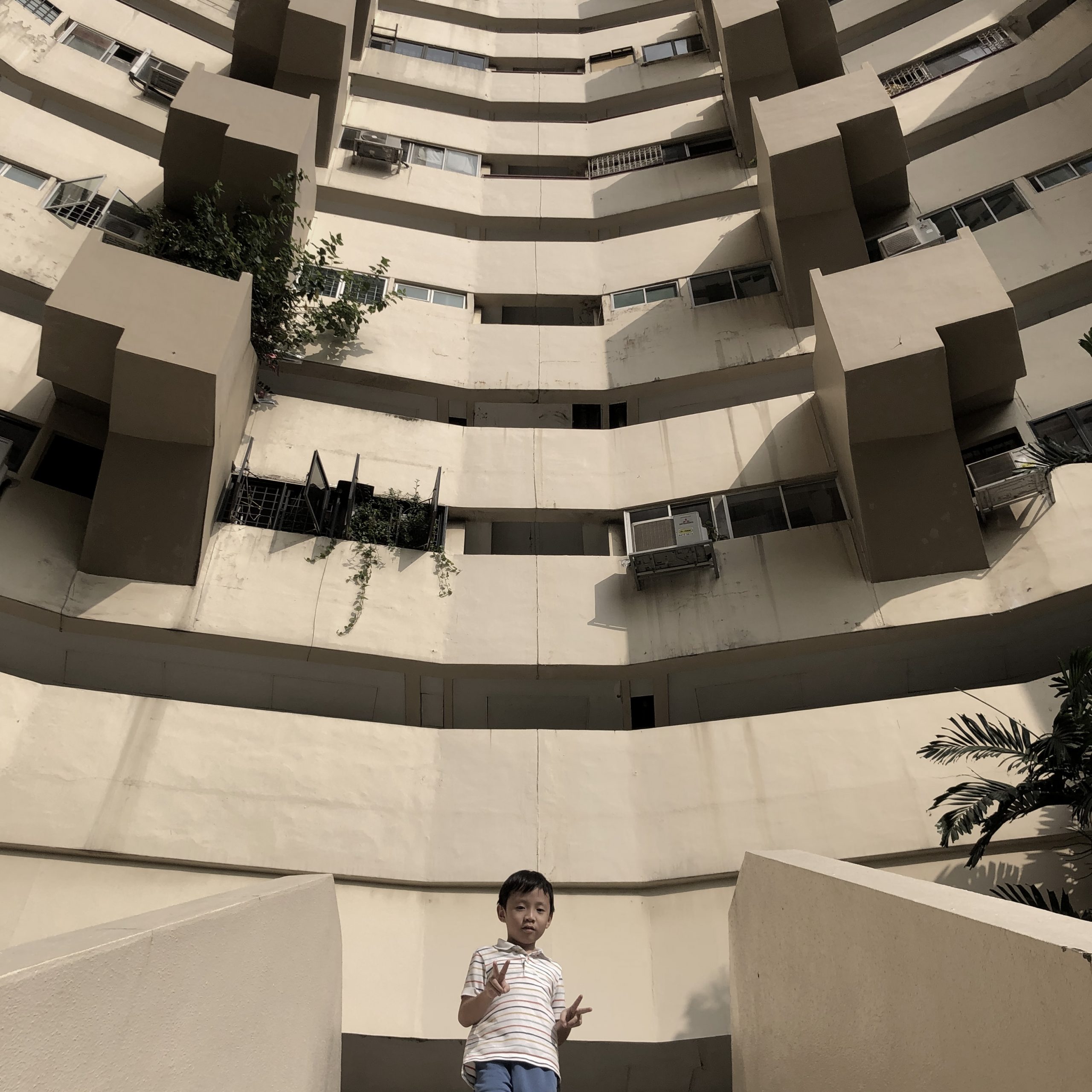 Christian at Pearl Bank Apartments. ©Darren Soh
Christian at Pearl Bank Apartments. ©Darren Soh
Completed in 1976, the building was designed by an old uncle by the name of Tan Cheng Siong and he was assisted by another old uncle named Tang Guan Bee. Together, they are two of the most talented architects that Singapore has ever produced.
I remember that you and I had that scary feeling when we stepped out of the lifts on the high floors at Pearl Bank Apartments. That feeling was vertigo and I do have a photograph of you on one of the numerous external staircases the building was infamous for, all of which had parapets that felt like they were constructed much too low.
Mark my words, Christian, one day, it would be a badge of honour to say that you had stepped foot into the legendary Pearl Bank Apartments and experienced those staircases for yourself.
Staircases like those will never be built again in any building here in Singapore and because Pearl Bank Apartments was demolished in 2019, none exist in real life anymore.
Some landmarks end up as part of a condominium, others are completely demolished
Over in Punggol is a strange bungalow called the Matilda House, which is today a clubhouse in yet another condominium. Built over a hundred years ago in 1902, the house once belonged to the Cashin family and was surrounded by coconut and other fruit trees for as far as the eye could see.
The Cashins were a Eurasian family that owned a lot of land and plantations in Singapore and the Matilda House was a weekend home for them. The area around the Matilda House was surrounded by farms, one of which belonged to NaiNai and her family. Her family reared chickens and grew vegetables.
NaiNai’s Mummy, my grandmother or Ah Mah, would sell the vegetables they grew at a market on Upper Serangoon Road. Some of their neighbours reared pigs too! In fact, Mummy’s Daddy, your Grandpa Joe, grew up on a pig farm in Punggol.
Of course, all these farms were long gone by the time you were born, but they were still around when Daddy was a little kid. At the end of Punggol facing Malaysia that lies just across the water is a place called Punggol Point.
When Daddy was a child, there were seafood restaurants that I would frequent there with our extended family from NaiNai’s side. We would sit at tables set up on the road itself and eat while large buses made three-point turns in front of us and our food. That definitely added extra flavours to our meals!
I started to photograph in Punggol some 20 years ago before any HDB blocks appeared but even then, it was already too late.
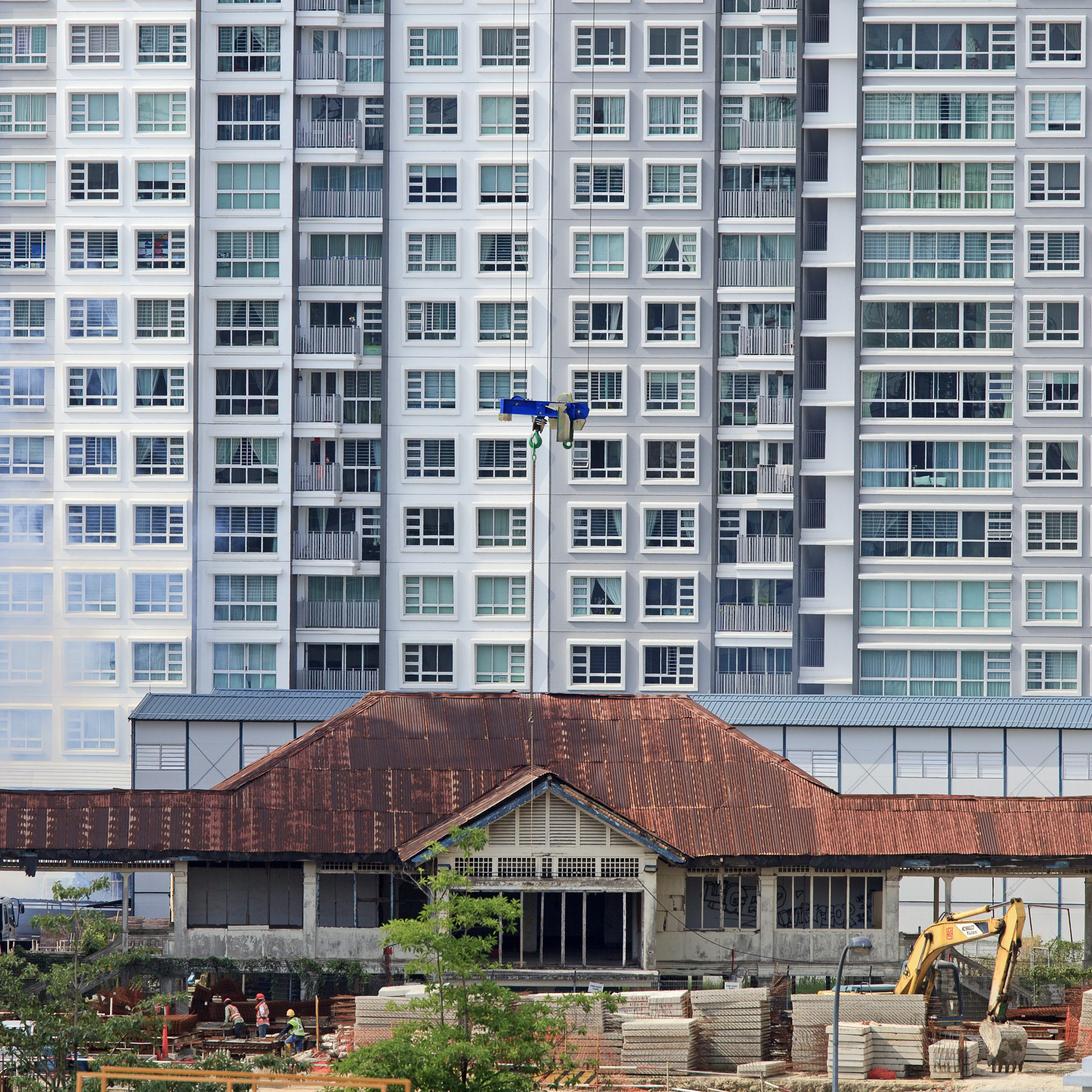 Matilda House was saved from demolition and has become integrated as the clubhouse of a condominium. ©Darren Soh
Matilda House was saved from demolition and has become integrated as the clubhouse of a condominium. ©Darren Soh
The farms and restaurants had long been relocated and today, new blocks of tall and dense HDB blocks are being built right on the waterfront.
Finally, I want to tell you a story about a library. And not just any library. You know the tunnel that we sometimes drive through after attending church on Sundays? At the entrance of that tunnel used to stand the Stamford Road Library. It was a structure built entirely of beautiful red bricks that many people from Daddy’s generation and many generations before us simply referred to as THE National Library.
Daddy spent many hours studying there after school when I was a student and thousands of other Singaporeans had very fond memories of the building too.
So, imagine the shock we all had when we were told that this beautiful building in amazing condition would have to be demolished and the National Library relocated.
And all because they wanted to build a road tunnel through Fort Canning Hill that would cut travel time by about three to five minutes. Do you think these few minutes saved was a good reason to destroy an old building that many many people loved? Daddy didn’t think so too.
Lots of people spoke up against this but ultimately, it was to no avail.
The National Library building at Stamford Road was demolished in 2004 and along with it, the memories of thousands of Singaporeans who had walked through its hallways were also purged.
Today, all that is left to remind anyone of the Library’s existence is a pair of original gate posts standing on the grounds of the Singapore Management University, the only physical evidence left onsite where the magnificent building used to stand.
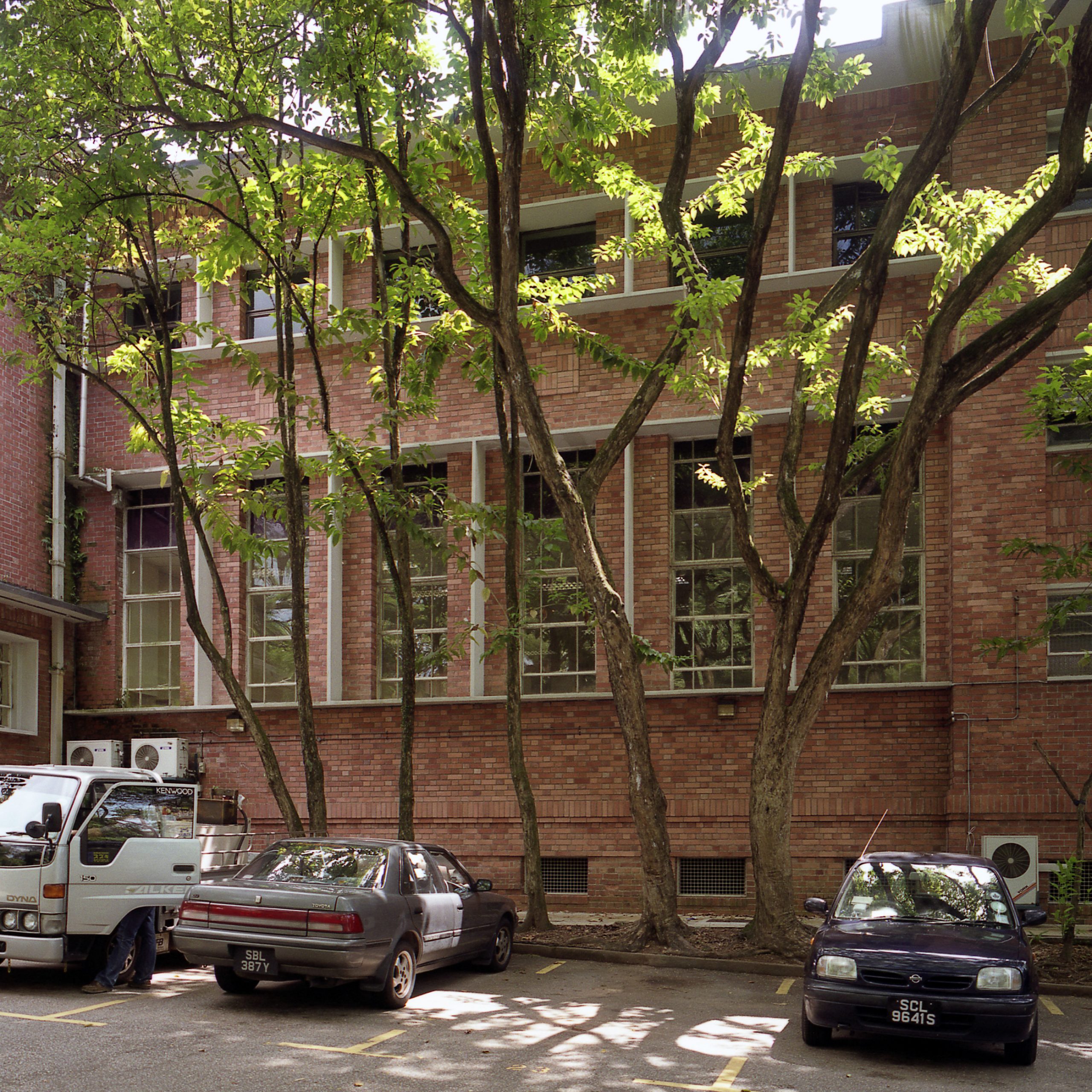 The former National Library of Singapore with its distinctive red brick walls was a landmark in the Stamford Road area. ©Darren Soh
The former National Library of Singapore with its distinctive red brick walls was a landmark in the Stamford Road area. ©Darren Soh
Given the frenetic pace of development, photographs might soon be all that remains of old landmarks in Singapore
Unfortunately, many places I would love to take you are disappearing for one reason or another, and I do wish that perhaps the people involved would think more carefully before they start tearing down old buildings.
In a perfect world, I would show you all these places, where Mummy and Daddy spent many hours when we were younger but sadly, many of them are not going to be around by the time you read this letter.
And unless the pace of redevelopment in Singapore slows down, I am afraid that my memories and these photographs will be all that I have for you from these places.
There will come a day when Daddy is not able to photograph anymore, and it is my hope that you would have started to make photographic memories of your own a long time before that happens, in order to capture figments of your real world.
Totally unrelated but follow and listen to our podcast here
Top images ©Darren Soh
If you like what you read, follow us on Facebook, Instagram, Twitter and Telegram to get the latest updates.
